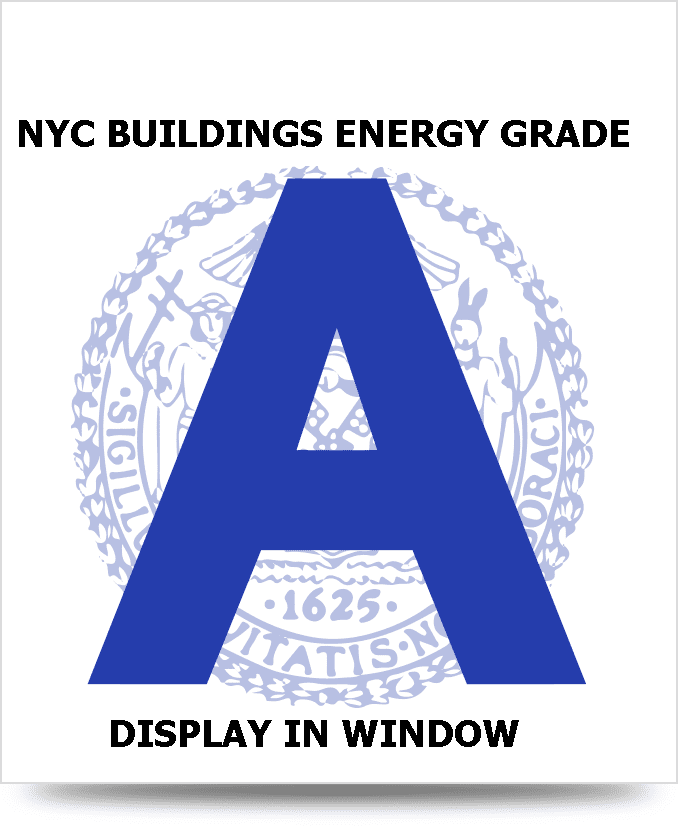
Nhance Solutions currently handles the Local Law 84 and 133 benchmarking process for over 1,000 buildings. We handle the entire compliance process from start to finish. It a benefit for our clients of having their energy usage continuously analyzed and monitored by a full-service energy manager.
Local Law 84 was signed into law in 2009 as part of a larger package of energy laws known as the Greener, Greater Buildings Plan. The law applies to New York City buildings larger than 50,000 sqft the law requires owners and managers to report their building’s energy usage to the City of New York on an annual basis. This process is known as ENERGY STAR benchmarking.
Local Law 133 was signed into law in 2016 and expanded the list of buildings required to file benchmarking reports to include buildings 25,000 sqft and greater.
Local Law 33 is Effective as of January 2020, buildings must display their energy grade in the window. (similar to restaurant grading)
An energy efficiency score is the Energy Star Rating that a building earns using the United States Environmental Protection Agency online benchmarking tool, to compare building energy performance to similar buildings in similar climates. Grades based on Energy Star energy efficiency scores will be assigned as follows:
A – score is equal to or greater than 90
B – score is equal to or greater than 50 but less than 90
C – score is equal to or greater than 20 but less than 50
D – score is less than 20
F – for buildings that didn't submit required benchmarking
N – for buildings exempted from benchmarking
The energy label will include both a letter grade and the building’s energy score.
Violations for Failed Compliance
The Department of Buildings (DOB) is authorized to issue violations for any property on the Covered Buildings list that has not provided a benchmarking report by the May 1 deadline. Failure to benchmark will result in a violation and a penalty of $500. Continued failure to benchmark by subsequent deadlines of August 1, November 1, and February 1 will result in additional violations on a quarterly basis and a penalty of $500 per quarter with a maximum of $2,000 per year.